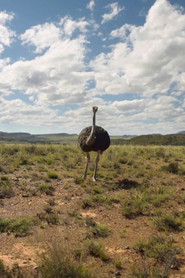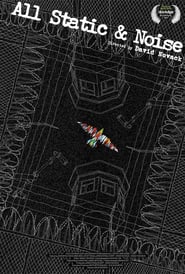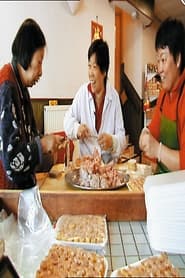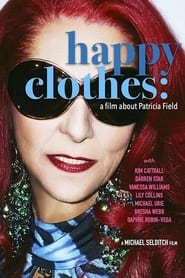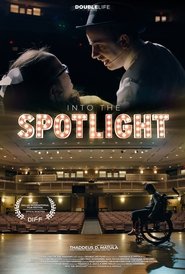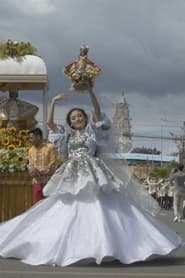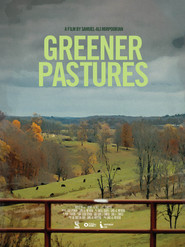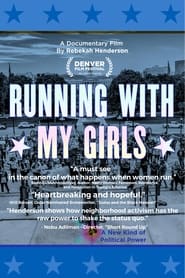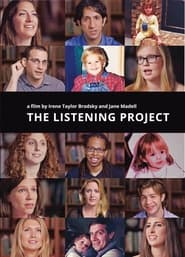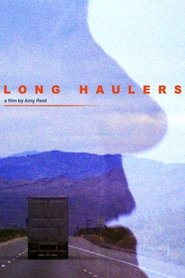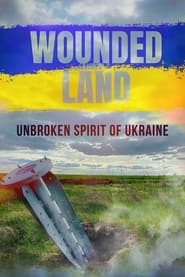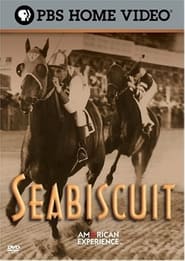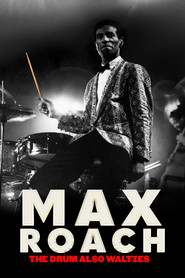Top Rated Documentary Movies on Kanopy - Page 225
-
Super Senses
2021
Super Senses
2021
We take our features, our noses, eyes, and ears for granted, but they are pretty weird things until you look at the nose of a tapir or desman, the eyes of a cuttlefish or chameleon, or the ears of a seal or elephant. There is an almost endless variety of designs, and some are downright odd! -
All Static & Noise
2023
All Static & Noise
2023
When Uyghurs and Kazakhs are arbitrarily detained in Chinese "re-education" camps, survivors and their families risk everything to expose the truth. -
Dim Sum (A Little Bit of Heart)
2002
Documentarist Jane Wong films her mother and two Chinese friends as they discuss their lives and experiences as émigrés living in Liverpool. -
Happy Clothes: A Film About Patricia Field
2024
Enter the colorful world of Emmy-winning, Oscar-nominated Patricia Field, the costume designer behind Sex and the City, Emily in Paris, Ugly Betty, and The Devil Wears Prada. A queer, first-generation Greek-American, this fiery redhead defied the odds to become a fashion icon. Features interviews with Kim Cattrall, Lily Collins, Sarah Jessica Parker, Michael Urie, and more. -
Exclusion U
2023
Exclusion U
2023
EXCLUSION U looks at the real scandal in higher education: How Ivy League Universities hoard billions while refusing to expand enrollments. These tax-exempt institutions are failing their mission to act in the public good. Interviews with low income students who fight for a place on campus, deans of admissions and shocking financial information force the question: why do we continue to invest so much in institutions that invest so little back in us? -
Into the Spotlight
2023
Into the Spotlight
2023
On the heels of a tragedy and the COVID-19 pandemic, a Dallas-based theatre troupe comprised of people with intellectual and developmental disabilities are determined to write, rehearse, and perform their 11th annual original musical. -
A Movement Against the Transparency of the Stars of the Seas
2023
A contemplation on the meanings of movement in the migration experience: the grace and skill of a Filipina domestic worker are juxtaposed with devotional dances to the Santo Niño statue that Magellan brought to the islands in 1521. The ensuing galleon trade of silk and porcelain for New World silver initiated the global economy, and the cycle where female care labor is now the commodity in demand. -
Greener Pastures
2024
Greener Pastures
2024
Contemplating the future of farming in America through the day-to-day lives of four small, Midwestern, multigenerational family farms over the course of three years. -
Running with My Girls
2021
Tired of watching local government ignore their communities’ interests, five diverse female activists decide to run for municipal office in Denver — one of the fastest gentrifying cities in the country. -
The Listening Project
2018
The profound impact of technology on the lives and identities of young deaf adults is explored in The Listening Project. Fourteen deaf people tell stories beginning with a childhood wide-eyed about sound, into the growing pains of adolescence and, eventually, their professional lives. Sometimes humorous, always tender, The Listening Project is a timely coming of age story, one we haven't heard before. -
Emission Impossible: The Future of Flight
2023
Without an alternative to fossil fuels for the aviation industry, one start-up keenly understands the urgency of reaching global climate goals by disrupting air travel. Sustainability for this company means not staying grounded but innovating the way we fly entirely and convincing policy officials, airlines and suppliers to come aboard. Their proposal? A hydrogen-fuelled, commercially viable plane that will replace ones fuelled by kerosene. -
Histories of the Holocaust:Buchenwald
2010
Contains 2 programs: Buchenwald 1937-1942 and Buchenwald 1942-1945. Every aspect of life within the fences was a torture where mistreatment by the guards was not only encouraged but was compulsory. Herman Pister's installment as commandant in 1942 only intensified the horrors committed there with experimentation on inmates in ways to kill more conveniently. The atrocities were discovered with its liberation by U.S. forces in 1945 and the desire for revenge took over as camp personnel were hunted down and made to publicly stand trial for war crimes. -
Where Do You Stand? Stories from an American Mill
2004
Traces the story of the 25-year struggle of Fieldcrest-Cannon textile workers to form a union in the face of modernization and globalization. -
Daring Women Doctors: Physicians in the 19th Century
2020
Hidden in American history, all women's medical schools began to appear in the mid 19th century long before women had the right to vote or own property. "Daring Women Doctors" highlights the intrepid, pioneering and diverse women who faced hostility and resistance in their pursuit of medical education. It also demonstrates how women doctors exerted a long-lasting influence on the movement towards women's rights. -
Arata Isozaki II: International Projects
1990
Through a blend of Japanese history and Western influence, Arata Isozaki has built a career around his boldly distinctive architectural style. Constantly challenging the concepts of space, form and tradition, Isozaki’s work dares us to imagine a merging of cultures where artistic movements and methods bind together in riveting new forms. "ARATA ISOZAKI II: INTERNATIONAL PROJECTS" follows the architect to many of his most famous sites including the Barcelona Olympic Sports Palace, Disney’s Team Building in Orlando, New York’s Palladium nightclub, as well as the newly completed Museum of Contemporary Art in Los Angeles. -
Long Haulers
2020
Long Haulers
2020
Through experimentation, direct observational filmmaking, and performative play, filmmaker Amy Reid rides and films with women truckers who have fled domestic violence, the stigmas of being formerly incarcerated, and mental health issues. The three subjects -- Sandi, Lori, and Tracy -- each share how they started trucking and what keeps them trucking. -
Safe Haven
2020
Safe Haven
2020
Safe Haven weaves together the powerful stories of U.S. war resisters who sought safe haven in Canada during both the Vietnam and Iraq wars. -
Wounded Land
2022
Wounded Land
2022
During the Fall of 2021, Ukraine was slowly emerging from a global pandemic. Around this time, a film crew began shooting a documentary focused on the country’s wine-making regions. Then, in 2022, things took a sharp turn when Russia escalated a war against Ukraine. This film tells the stories of hard-working people who, against all odds, remain engaged in continuing in business. -
Seabiscuit
2003
Seabiscuit
2003
He was boxy, with stumpy legs that wouldn't completely straighten a short straggly tail and an ungainly gait; though he didn't look the part, Seabiscuit was one of the most remarkable thoroughbred racehorses in history. In the 1930s, when Americans longed to escape the grim realities of Depression-era life, four men turned Seabiscuit into a national hero. They were his fabulously wealthy owner Charles Howard, his famously silent and stubborn trainer Tom Smith and the two hard-bitten, gifted jockeys who rode him to glory. By following the paths that brought these four together and in telling the story of Seabiscuit's unlikely career, this film illuminates the precarious economic conditions that defined America in the 1930s and explores the fascinating behind-the-scenes world of thoroughbred racing. Scott Glenn narrates. -
Max Roach: The Drum Also Waltzes
2023
The Drum Waltzes explores the life and music of legendary drummer, activist Max Roach, his creative peaks, personal struggles and re-inventions from the Jim Crow to Civil Rights eras, from heady days of post-war jazz to hip hop and beyond.
 Netflix
Netflix
 Amazon Prime Video
Amazon Prime Video
 Apple iTunes
Apple iTunes
 Apple TV Plus
Apple TV Plus
 Disney Plus
Disney Plus
 Google Play Movies
Google Play Movies
 Paramount Plus
Paramount Plus
 Hulu
Hulu
 HBO Max
HBO Max
 YouTube
YouTube
 fuboTV
fuboTV
 Peacock
Peacock
 Peacock Premium
Peacock Premium
 Amazon Video
Amazon Video
 The Roku Channel
The Roku Channel
 AMC+
AMC+
 Kocowa
Kocowa
 Hoopla
Hoopla
 The CW
The CW
 Vudu
Vudu
 Starz
Starz
 Showtime
Showtime
 PBS
PBS
 Pantaflix
Pantaflix
 FXNow
FXNow
 Tubi TV
Tubi TV
 Kanopy
Kanopy
 Comedy Central
Comedy Central
 Crunchyroll
Crunchyroll
 Microsoft Store
Microsoft Store
 Redbox
Redbox
 Sun Nxt
Sun Nxt
 ABC
ABC
 DIRECTV
DIRECTV
 Crackle
Crackle
 Fandor
Fandor
 Plex
Plex
